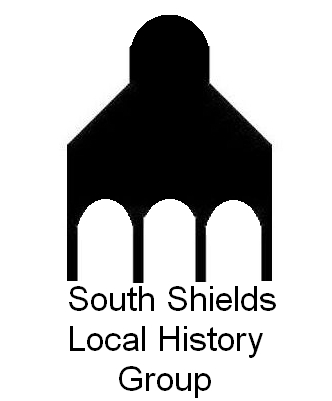
Early History
The Mill Dam derives its name from a “Mill” which was near a “Dam” on a river, but the river was not the Tyne but the River Branin. The Branin was a tributary of the Tyne which branched off at the point we now call Mill Dam.

The River Branin originally flowed from the Mill Dam area past what is now ASDA across Fowler Street, along the back of Ocean Road and then flowed down the lower part of Ocean Road and emerged at what is now the South Pier. The River Branin started to dry up in the 1700s and was largely filled in after the Napoleonic Wars leaving only a section called the Mill Dam Gut which was also covered over in 1929.
The mill was called Westoe mill and according to Hodgson, it was situated on the west bank of the inlet by the Mill Dam. The earliest reference he cites is 1347, when the mill and its “pond or dam” underwent repairs (Hodgson, 1903, p 53).
Later there were two water-mills:
“The mills only worked when the tide was in, and in later times the building was transformed into tenement property” (Hodgson, 1903, p 121).
The dam seems to have been a wooden bridge which prevented the river Branin from flooding. Hodgson describes it as a “crazy wooden bridge”:
“The only exit for cart traffic westward from the MarketPlace was by a narrow lane, skirting the north wall of the churchyard, and running straight down to what is to-day known as the Mill Dam, where it crossed the creek or gut by a crazy wooden bridge—barely wide enough for one vehicle to cross it at a time— which divided the town into ‘Fishergate’ and ‘Pannergate,’ and its inhabitants into ‘over-dammers’ and ‘under-dammers.’ (Hodgson, 1903, p 121).
The Mill Dam was seen as the demarcation line between the fishing industry to the east and the salt panning industry to the west, but by the early nineteenth century this distinction would have faded with the decline of both industries.


River View Pub and Kitchen
The River View pub stands on the corner of Coronation Street and Commercial Road and is the first building when you enter the Mill Dam area now. In 1938 this was the German Seamen’s Mission it was probably requisitioned during the war.

In the 1980s it was the Royal British Legion Hotel, then Bilko’s Bar and Stallones in about 1987.

In 1994 Tom and Claire Mein took over the pub and made it a very successful pub, they named it The Riverside.

In 2019 it was refurbished and opened as the River View pub and kitchen. It is still operating as that now.

The Railway Pub
The Railway was originally called the Brighton Beach and it was first mentioned as a pub in 1820. In 1844 it became known as the Railway Inn named after the Low Station which was just behind the pub. It was rebuilt possibly about 1890? From November 1969 it was a Tetley’s pub. In March 1987 Harry and Isobel Mallett took over the pub. The name was changed to The Waterfront in 2001.




The pub is currently called The Mill Dam.
Locomotive/Steamboat
The first Licensing record for the Locomotive Inn dates back to 1850 with Emmanuel Hayton as Licensee. Maria Pike had the pub in 1856. It was a Vaux Breweries pub from 1941. The pub extended into the old Post Office which had belonged to John Gaddes.
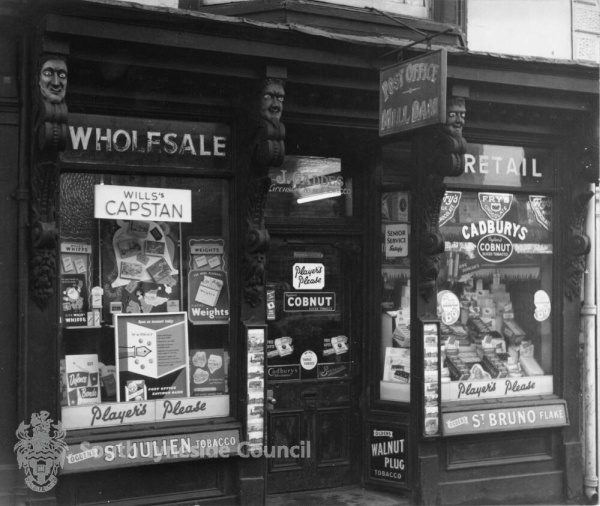
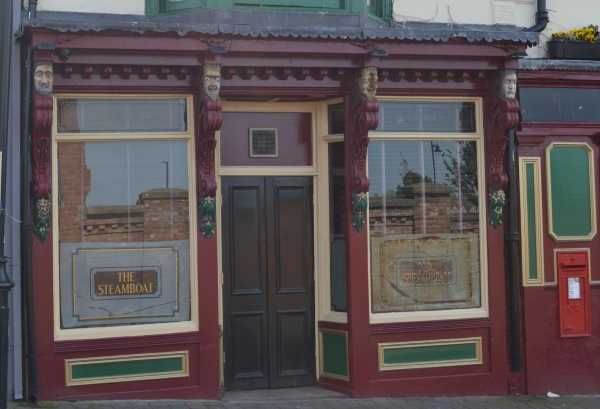
The name changed from The Locomotive to The Steamboat in the late 1970s. Joe Mooney was the landlord from March 1989 for 30 years.
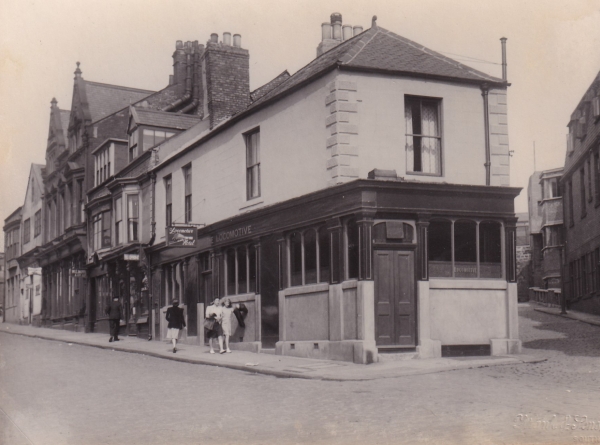
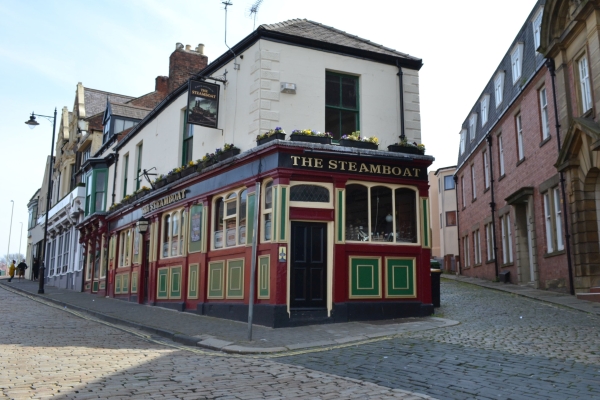
The Steamboat is still operating as a pub now.
Missions to Seamen
On the 7th October 1908 the foundation stone was laid and the German Sailor’s Home was opened on the 23rd September 1909. In August 1914 the building was requisitioned as a Volunteer Aided Detachment hospital. The German staff were either interned or deported to Germany because of the war. Due to the increasing numbers of seamen using the nearby Seamen’s Church and Institute it was decided to purchase the German Sailor’s Home and the new mission was opened on December 15th 1921 and was further extended in 1941.
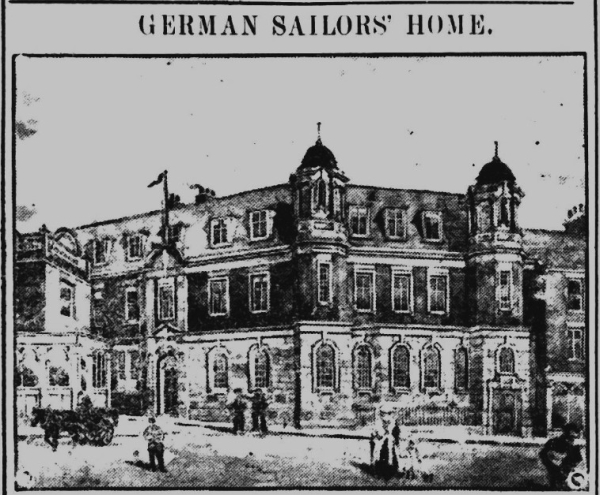
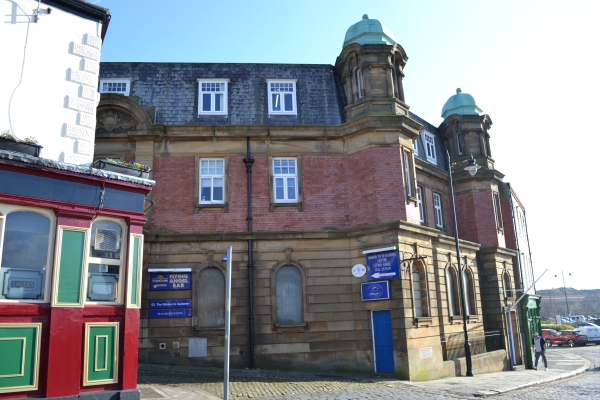
The Mission to Seafarer’s is still open today.
Seamen’s Church and Institute
Open on 25th May 1885 as the Seamen’s Church and Institute by the Bishop of Durham.


It was called Unity Hall in 1928, it is now residential flats.
The Customs House
The Custom House (as it was then called) was designed by the architect and borough engineer T. H. Clemence, the foundation stone was laid in 1863 and the building opened in 1864. It was used by customs officials to monitor the import and export of goods entering and leaving the Tyne.

In 1878 an extension was built designed by the well known local architect J. H. Morton this was to house the offices of the Local Marine Board. It was used as the Mercantile Marine Offices until the early 1970s but with the decline of the shipping industry it was no longer used. The building fell into serious disrepair after this.
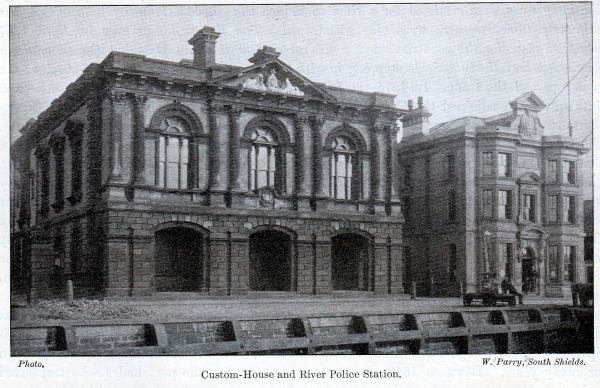

In 1984 the Arts and Live Music Association (ALMA) started to restore the building. The original building was restored, a new purpose built theatre was added to the rear of the building and it opened in November 1994.
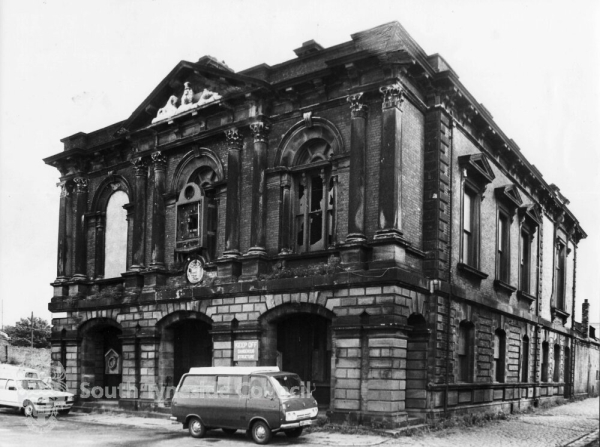


It is still operating as an arts centre in 2023.
River Police Headquarters
The River Police headquarters was built in 1886 to replace an older building further down the river in Holborn. The Tyne was a very busy river and during the nineteenth century most people lived and worked close to the rivers and given that most people were unable to swim there were a lot of people who died in the river by drowning. These people were brought by the River Police to the mortuary at the River Police Headquarters; it was popularly referred to as the “Dead House”.
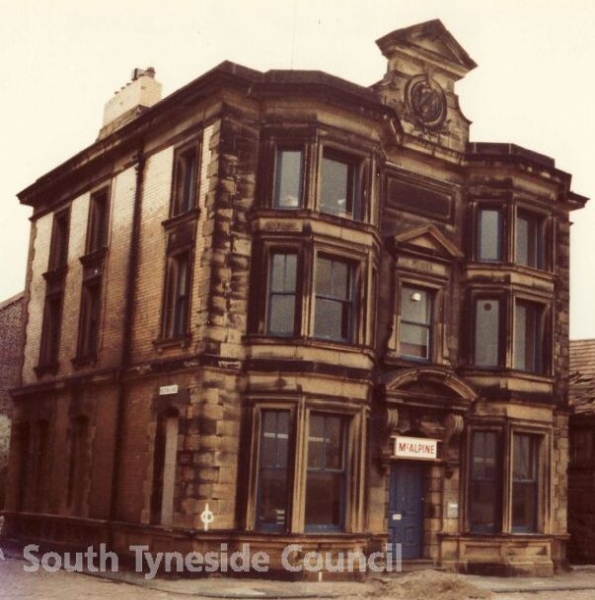
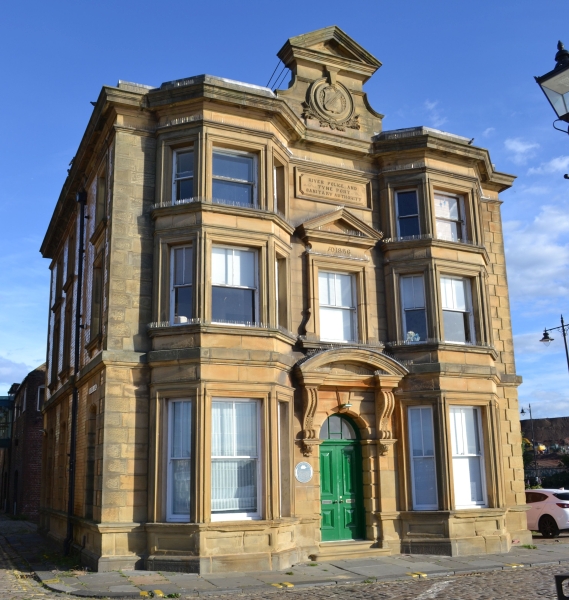
In August 1970 the River Police moved to new headquarters at Gateshead.
Subscription Brewery
Now part of the Customs House the subscription brewery dates back to at least 1826 when Robert Bell was brewer at the Subscription Brewery it ceased trading before 1846 then the building was used by Lee and Robson mast and block makers. In 1860 it was used as a drill hall for rifle and artillery exercises.

By 1876 William Wood was using it as a sail loft he carried on this business there until 1962.
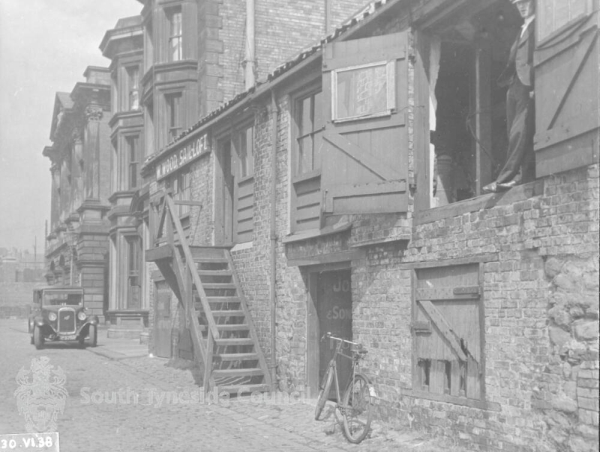
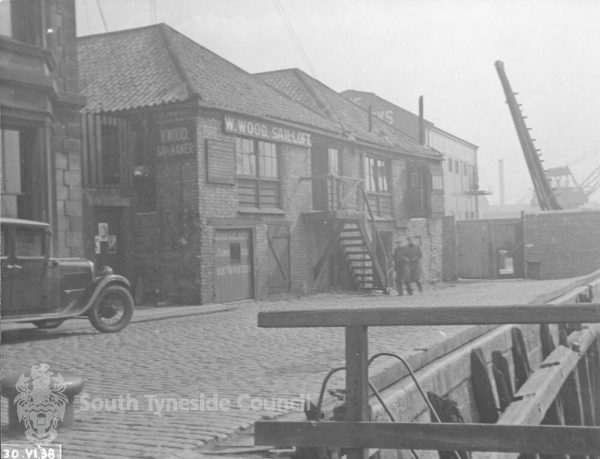
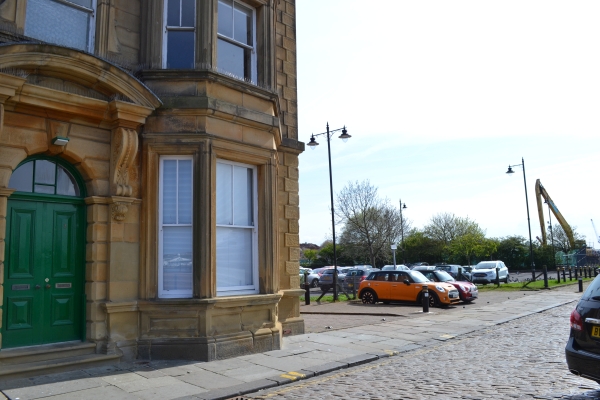
2023
William Wood’s sail loft building was demolished and is now just parking space.

Another Subscription Brewery building is still used by the Customs House.
Mill Dam Gut
The Mill Dam Gut was at the beginning of the River Branin and it was all that was left of the River Branin after it was filled in during Napoleonic times.
“It was in order to relieve the distress so occasioned amongst the seafaring class that the relief works which resulted in the filling up of the Mill Dam Gut were undertaken in South Shields.” (Hodgson page 299)
An 1827 map of the area records it as Mill Dam Dock, in the late 19th century it was known as Mill Dam Landing and was used as a landing place and mooring for small boats.
From the 1890s it was considered a public nuisance as it became a sewer outlet and the smell was so bad that in 1902 the Custom House moved to other premises in King Street/Waterloo Vale!
In 1926 it was supposed to have been used as a dumping ground for stolen property!

Tenders for filling in the Mill Dam Gut were received in 1929 and the work was completed in 1930.
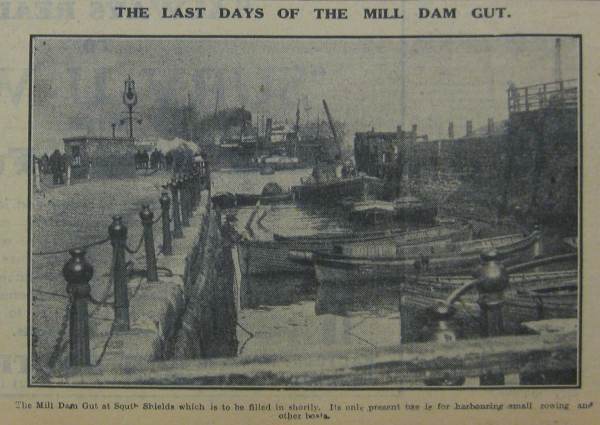
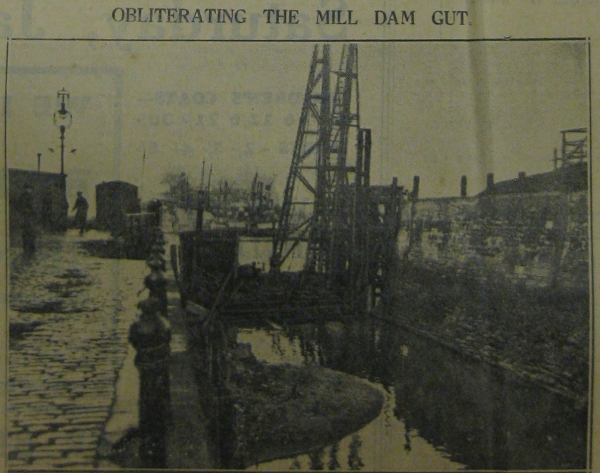
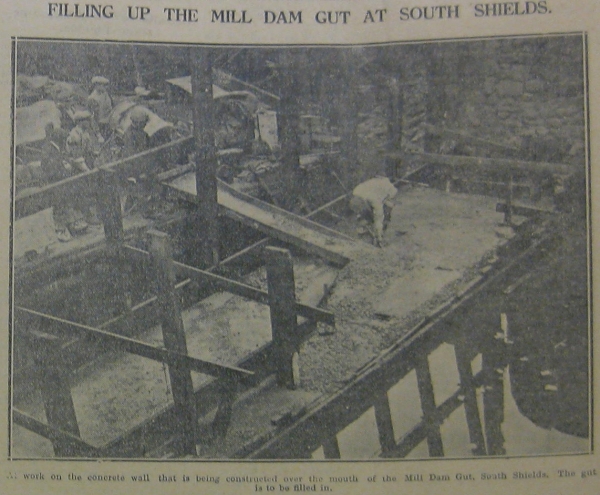
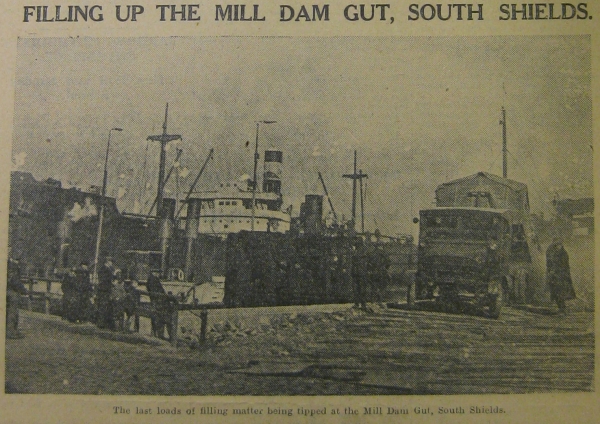


The Merchant Navy Memorial now sits on the site of the Mill Dam Gut.
Merchant Navy Memorial
Designed by Heritage Project York in 1990, it is to commemorate the thousands of men who sailed from South Shields who died in World War Two.
The Commonwealth War Graves Commission records that a total of 29,018 Merchant Navy men died in World War Two. South Shields lost 563 men, the third highest number of Merchant Navy losses in the country, only Liverpool and Glasgow; which are much larger cities, lost more men. South Shields also had the highest Merchant Navy losses as a percentage of the total population by a significant factor. We lost five times more Merchant Navy men than our neighbours Sunderland and eight times more than Newcastle as a percentage of the population!
| Town/City | Population 1931 | MN Losses | % of Population |
| South Shields | 113,455 | 563 | 0.50% |
| Hull | 310,349 | 527 | 0.17% |
| Liverpool | 846,302 | 1,300 | 0.15% |
| Sunderland | 281,948 | 280 | 0.10% |
| Glasgow | 1,088,083 | 636 | 0.06% |
| Newcastle | 324,854 | 180 | 0.06% |
No census taken in 1941 so 1931 census used instead
Merchant Navy losses from Commonwealth War Graves Commission
Population census data from Vision of Britain and ONS


Tyne General Ferry
“In December 1858, at a public meeting in the Town Hall, the Tyne Passenger Traffic Association was formed, with the object of obtaining adequate landings for steamboats within the Borough, and developing the passenger traffic on the river. The new Association induced the Corporation to establish a steamboat landing on part of the Gut or dock, adjoining what is now the Corporation Quay at the Mill Dam.” (Hodgson p. 196)

“The landing was, however, opened for public use on July 25, 1859, and was immediately made use of, Messrs. Palmer Bros. starting a direct steamer which plied every hour between Jarrow and the landing, …in the session of 1862 a Parliamentary Bill, which received the Royal Assent in April that year as the Tyne General Ferry Act.” (Hodgson p. 197)

The ferry mainly operated between South Shields and Newcastle and ran every half hour.

Even a ferry trip to see the Prime Minister Gladstone was possible!

“Tyne General Ferry Company commenced a service of boats between the Mill Dam and the Sunderland Dock outlet three times daily, at 4d single and 6d return fare, the boats being timed to meet and catch the trains from and to Durham and Hartlepool.” (p. 396 Hodgson)

There were also trips between the piers, leisure trips and even a ferry trip with the Garibaldi Brass Band!

In honour of the people from Tyneside’s greatest hero; Garibaldi, a ferry was named after him. In true swash buckling style in 1863 the Garibaldi was caught speeding!

In 1908 Tyne General Ferry Company was wound up, mainly because of cheaper competition from the railways.

Cookson’s Glass Works
Isaac Cookson (1679–1743) set up a glassworks at South Shields in 1737. Cookson’s Glass Works was the leading glassmakers in the district until the middle of nineteenth century when the works passed to Swinburne and Company, who manufactured glass there until 1876.
The glassworks used railways to collect sand from the beach near the Bents for making the glass and then dumped the waste back at the Bents. Swinburne’s was then taken over by the Tyne Plate Glass Company which subsequently folded in 1891 due to foreign competition.




All that remains of the glassworks is the 30 feet tall chimney which is dated 1865.
Harton Staiths
The Harton Coal Company took over the Tyne Plate Glass Company site at Mill Dam in 1892.

Coal was transported from Harton Colliery along railway lines to the staiths where it was then loaded onto ships.

In 1904 steam trains hauled the coal to the staiths but from 1908 electric trains were used. In later years waste shale was also transported from Westoe Colliery to the staiths.

A tunnel ran under Coronation Street to allow the railway trucks to pass underneath the road.


Yusef Abdullah worked at Harton Staiths in the 1980s he remembered that after the wagon repair workshops were demolished:
“I was down at the site where there was only the chimney left after the workshop was demolished, I remember the ball and the chain crashing everything and it was going towards the glassworks chimney and there was one of the engineers and I said: ‘Oh, they’re going to knock the chimney down!’ He says, ‘they can’t F-ing do that!’. He went ballistic, so both of us run towards the operator of that machine and we yell at him, ‘Don’t do it! Don’t do it!’ and he stopped luckily! So I see that chimney these days beside the Customs House, I always feel proud.”
He also remembers that in the Staith Master’s House there was a: “Staircase going up to a lovely stained glass window, which was actually overlooking the Staiths”
In August 1988 British Coal transferred the operation to Tyne Dock to allow larger ships be used and in 1989 Harton Staiths were closed.
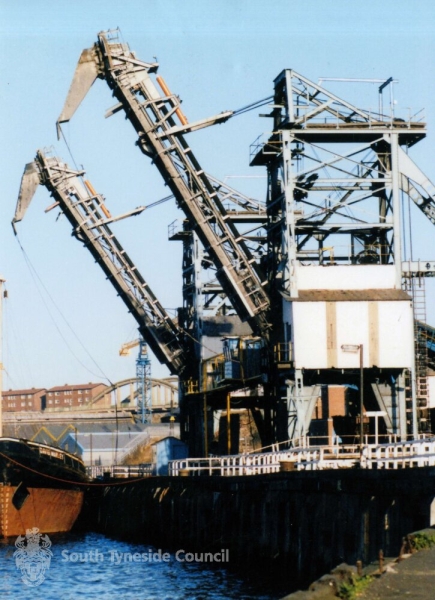
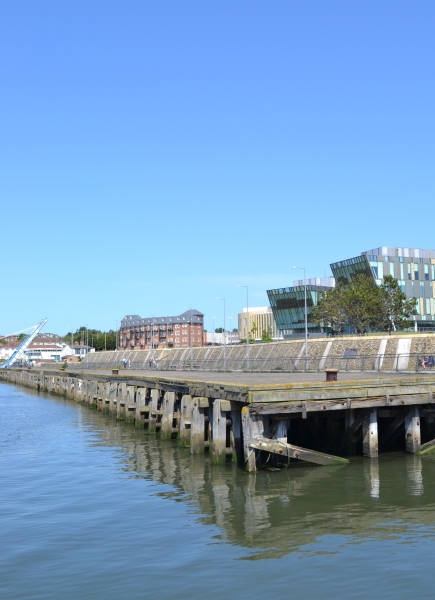
The area is now called Harton Quays. The staiths where ships were loaded and part of the boundary wall are still in existence.
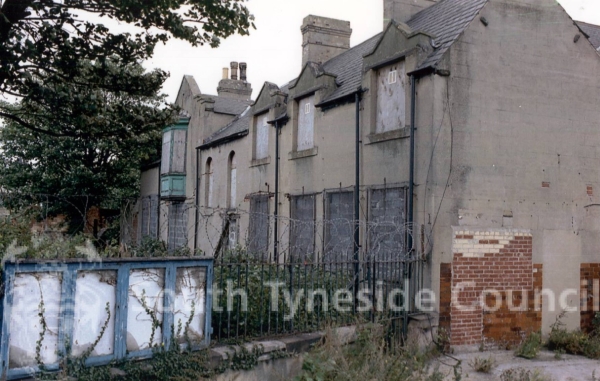
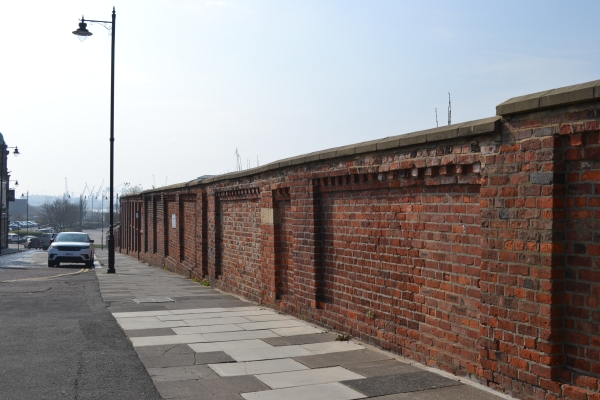
The Staith Master’s House was demolished in 2017.
Readhead’s Plaque
This plaque was originally on the wall outside the head office of the ship repairer Readhead’s. It was unveiled in 1921 and contains the names of 57 men who were employees of Readhead’s who were killed in World War One, the Latin phrase “Pro Patria” means “for one’s country”.

The plaque was relocated to Harton Quays Park in 2014.
Ferry Landing
Ferries started from this location in 1830 operated by the North and South Shields Ferry Company. Prices: ½d for a Hog, 6d for a Hearse, Carriage or Chariot, 1d for a Foot-passenger, the steam ferry operated every 15 minutes from six o’clock until dusk. A new ferry landing was put in place in 1904, this was 15 times the surface area of the old landing; the one on the “dark side” was only 14 times larger. This landing had a canny innings lasting 74 years until it sank in 1978 due to an exceptionally low tide, the landing was then refloated but was replaced by a new ferry landing in 1999.
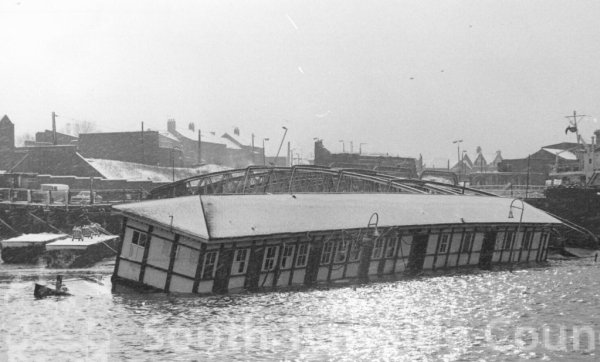
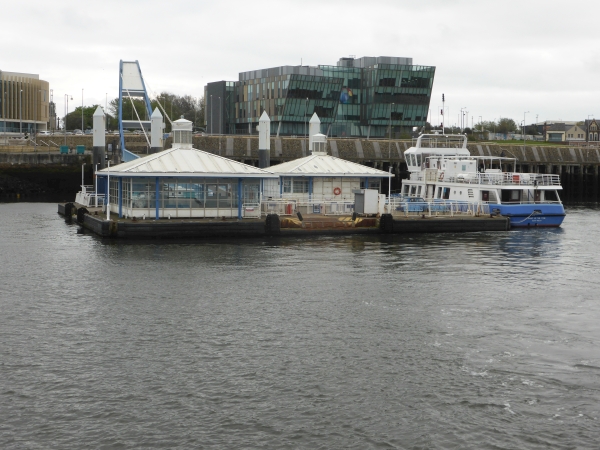

Sources:
British Newspaper Archives
Commonwealth War Graves Commission
The Borough of South Shields, George B. Hodgson, 1903
Terry Ford
Yusef Abdullah
Photos:
Ron Lawson, Sunderland Antiquarian Society
South Tyneside Libraries
Terry Ford
